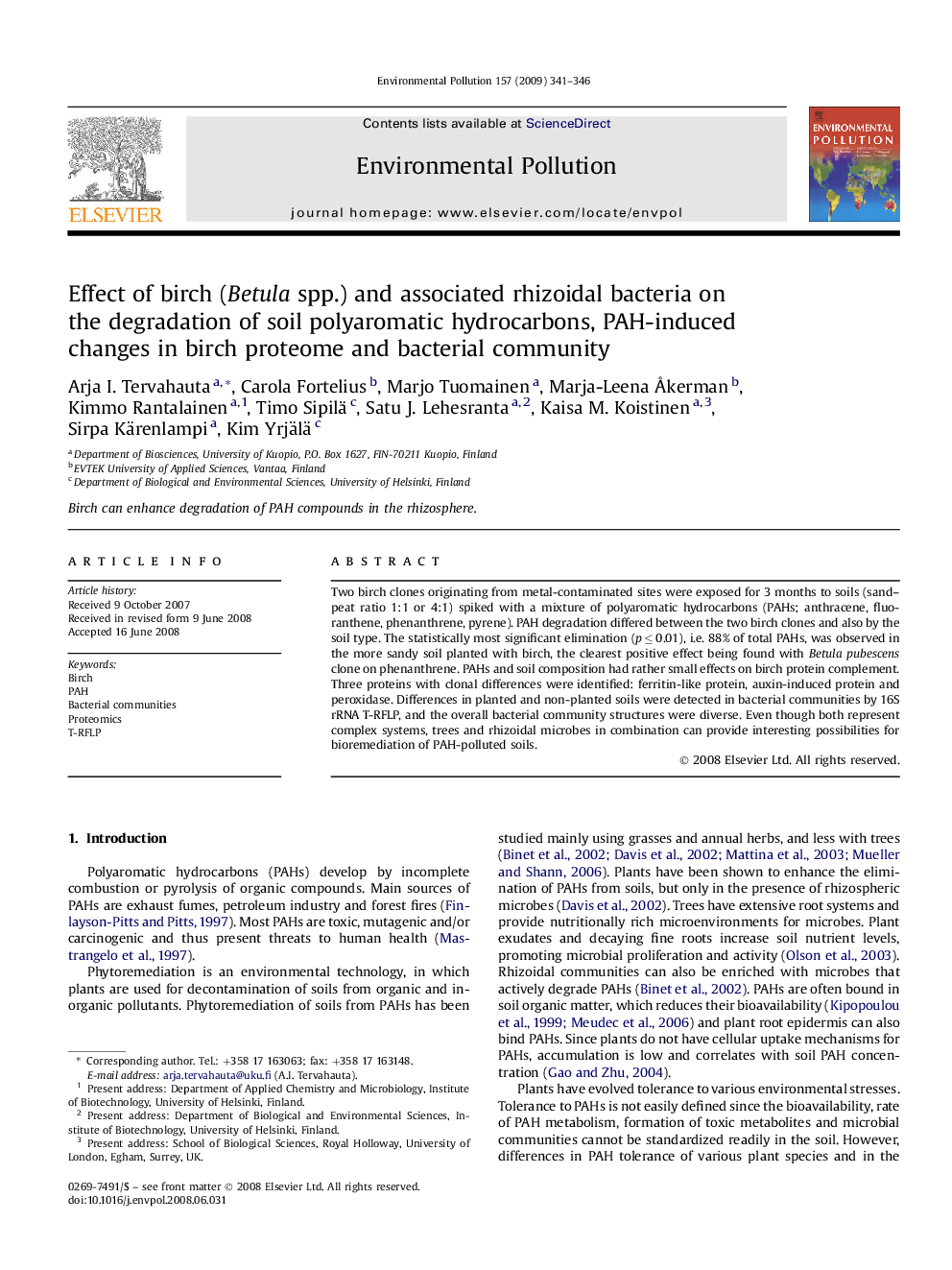| Article ID | Journal | Published Year | Pages | File Type |
|---|---|---|---|---|
| 4425996 | Environmental Pollution | 2009 | 6 Pages |
Two birch clones originating from metal-contaminated sites were exposed for 3 months to soils (sand–peat ratio 1:1 or 4:1) spiked with a mixture of polyaromatic hydrocarbons (PAHs; anthracene, fluoranthene, phenanthrene, pyrene). PAH degradation differed between the two birch clones and also by the soil type. The statistically most significant elimination (p ≤ 0.01), i.e. 88% of total PAHs, was observed in the more sandy soil planted with birch, the clearest positive effect being found with Betula pubescens clone on phenanthrene. PAHs and soil composition had rather small effects on birch protein complement. Three proteins with clonal differences were identified: ferritin-like protein, auxin-induced protein and peroxidase. Differences in planted and non-planted soils were detected in bacterial communities by 16S rRNA T-RFLP, and the overall bacterial community structures were diverse. Even though both represent complex systems, trees and rhizoidal microbes in combination can provide interesting possibilities for bioremediation of PAH-polluted soils.
